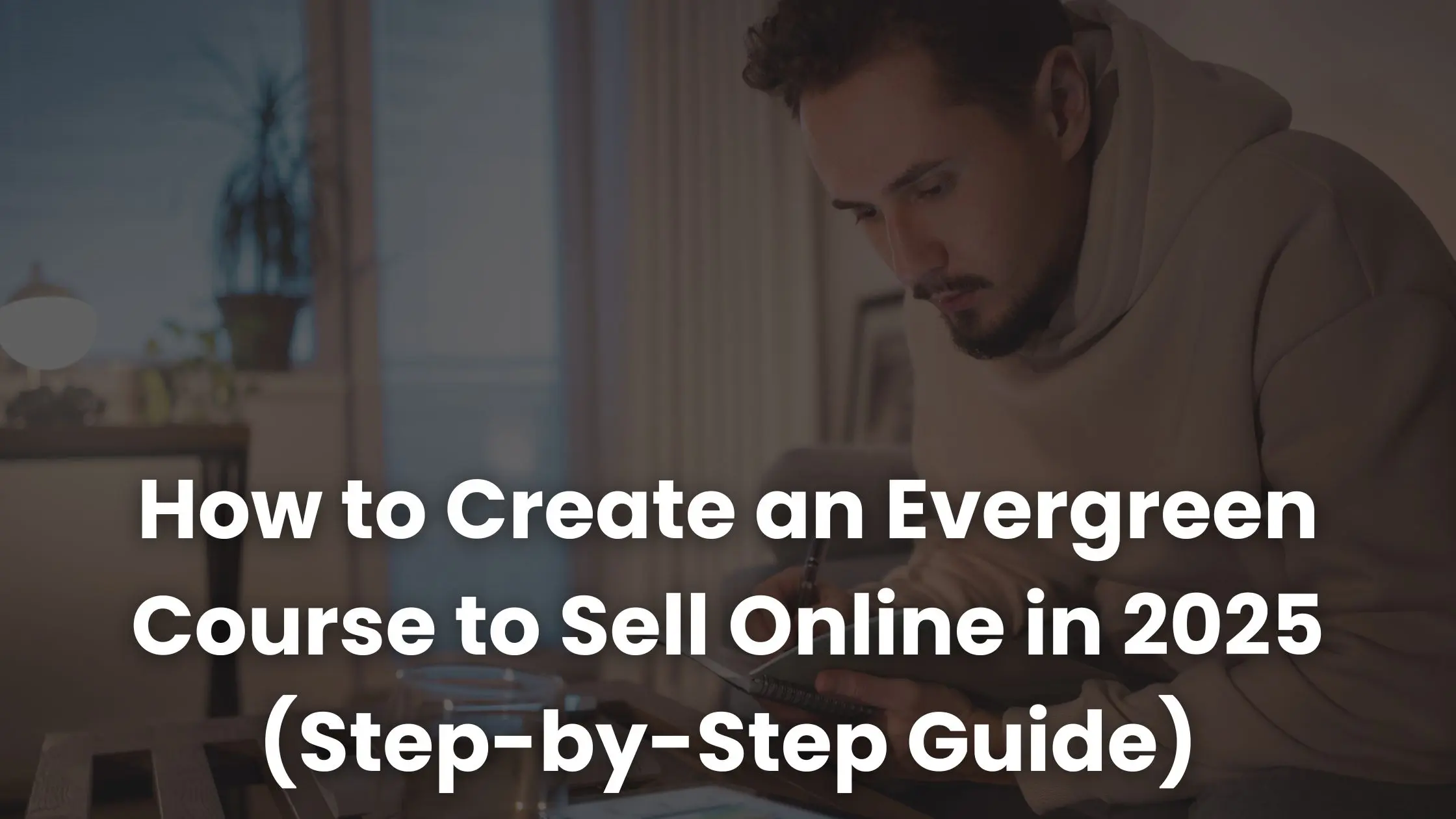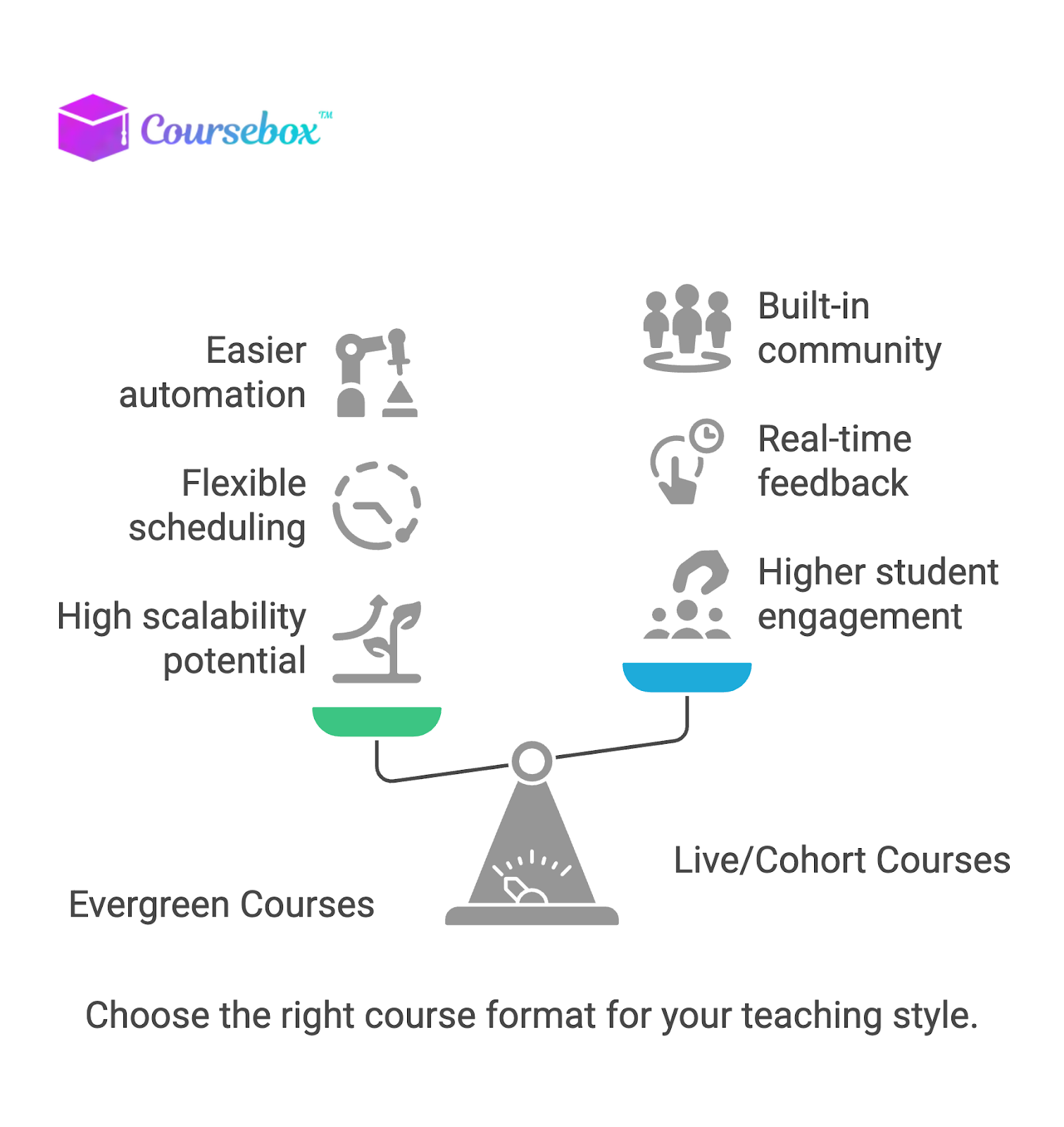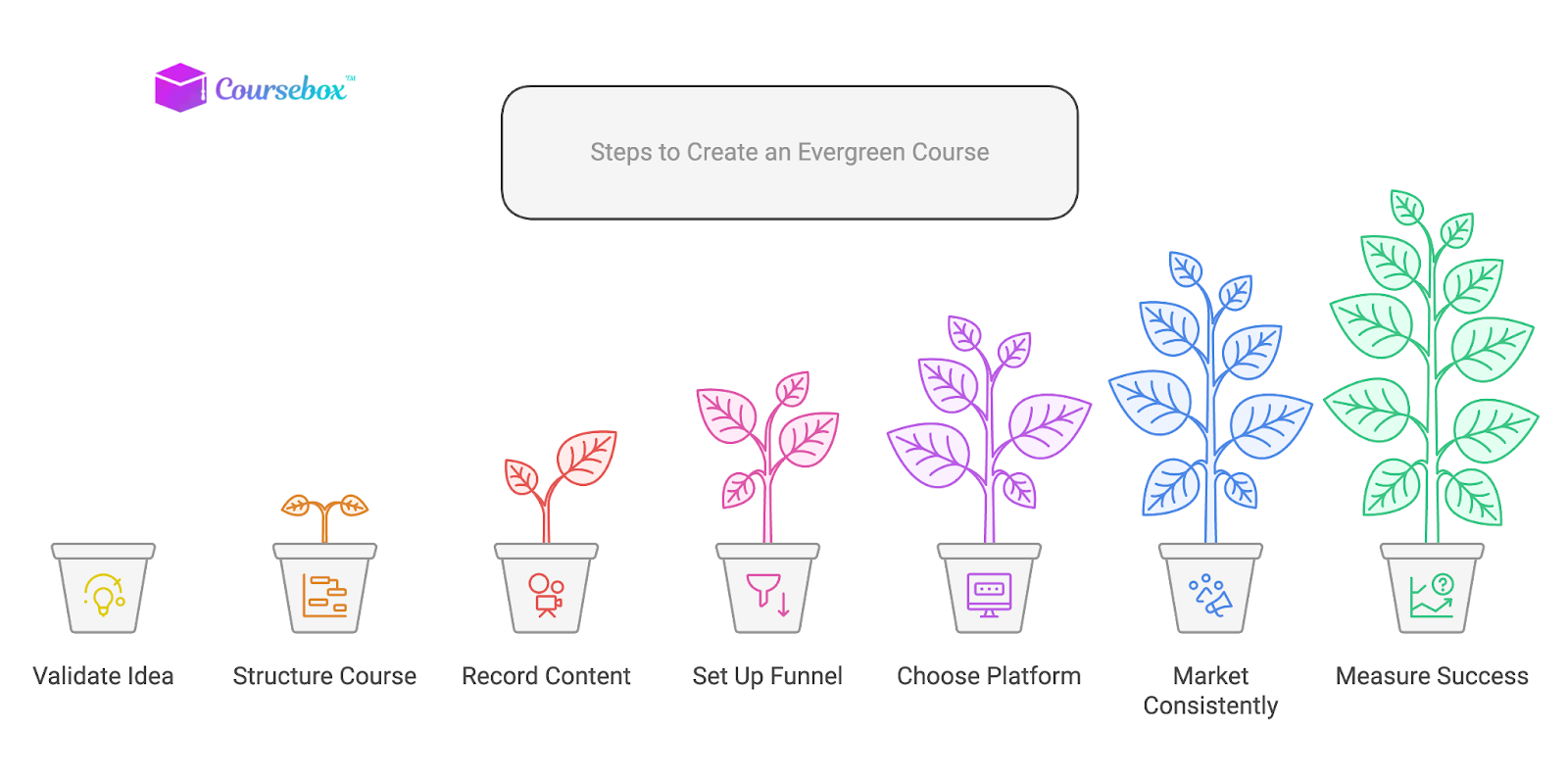How to Create an Evergreen Course to Sell Online in 2025 (Step-by-Step Guide)
Learn how to create an evergreen course to sell online. This step-by-step guide shows you how to plan, build, and scale your course for consistent sales.
Learn how to create an evergreen course to sell online. This step-by-step guide shows you how to plan, build, and scale your course for consistent sales.

Did you know that the global e-learning market is projected to hit $457 billion by 2026 (Source)? That’s massive—and a big reason why more creators are turning to evergreen courses. Unlike live cohorts, evergreen courses sell while you sleep. Sounds dreamy, right?

In this guide, I’ll walk you through every step to create, automate, and sell an evergreen course online.
Whether you're starting from scratch or turning your live training into a self-paced product, this process can help you build something that works on autopilot—while still delivering real value to your audience.

An evergreen course is a self-paced online course that’s always available for purchase. It runs on autopilot, meaning students can enroll and start learning anytime—no waiting for a start date. The content stays mostly the same and doesn’t need frequent updates or live sessions.
This is different from live or cohort-based courses. Those usually have a set start and end date, a group of students learning together, and live calls or check-ins with the instructor. With evergreen, the learning is flexible and independent.
Each format has benefits and drawbacks:
Many course creators have built strong businesses with evergreen models. Gillian Perkins teaches business and marketing through evergreen systems. Mariah Coz built her entire funnel using automated sales. They both use tools like ConvertKit and Teachable to make it work.
If you want to create a course that sells without being tied to your calendar, evergreen might be the way to go. Just know it takes planning upfront to make sure it delivers real value even without live interaction.

Before you build your course, make sure people actually want it. This step is called validating your course idea. It helps you avoid wasting time on something that won’t sell.
Start by choosing a topic that solves a real, long-term problem. Evergreen topics are usually tied to skills, habits, or challenges people face year after year—like time management, nutrition, or freelance writing.
Next, look for what your audience is already struggling with. Search forums, Facebook groups, or Reddit threads. Use keyword tools like Ubersuggest or AnswerThePublic to see what people are searching for. Look for phrases that keep popping up.
The best way to test your idea is to pre-sell it or run a beta round. This means offering the course early—either as a paid preview or at a discount. You’ll see if people are willing to pay, and you’ll get feedback fast.
Here are some simple tools to help validate:
Validation helps you build with confidence, not guesses.
A strong evergreen course starts with a clear outcome. Ask yourself, What will someone be able to do or understand after they finish this? That’s the transformation. It should be simple, specific, and useful—like “write your first blog post” or “create a weekly meal plan.”
Once you have the outcome, build your outline backward. What steps does someone need to take to get there? Break the process into clear lessons. Each one should move the learner forward without extra fluff.
Then choose the right format. Evergreen courses often use:
Keep it simple. Evergreen content works best when it’s easy to follow. You don’t need to say everything—just what helps them take action. Avoid long videos or complicated language that could confuse someone watching a year from now.
Here’s a quick checklist:
Planning well makes your course more helpful—and easier to finish.
You don’t need fancy gear to record a solid evergreen course. A clear webcam, a decent microphone (like the Blue Yeti), and natural lighting can go a long way. Tools like Loom, ScreenFlow (Mac), or OBS Studio (free) make it easy to record your screen and voice at the same time.
Since this course will be watched over time, keep the content timeless. Avoid things like “last year” or naming trends that might fade. Use general, lasting examples. Focus on clear steps and concepts that stay relevant.
To keep things organized, create short intros and outros. These can be the same for every video to save time. Transitions between sections also help things flow and feel polished.
Even if you're not live, you can still be engaging. Talk like you would to a friend. Look into the camera. Use stories, examples, and questions to keep it interesting.
Here are a few tips to make your content shine:
Consistency and clarity matter more than perfection.
An evergreen sales funnel helps you sell your course automatically. It starts with a lead magnet—a free resource like a checklist or short video. People sign up with their email to get it. From there, an email sequence guides them toward buying your course.
Your emails should feel personal and helpful. Start by teaching something useful. Then explain how your course takes them further. A good sequence has 5–7 emails spread over a few days.
To create urgency, you can use evergreen timers. These give each subscriber a limited-time offer based on when they join. It’s not fake—it’s just automated. Tools like Deadline Funnel or ThriveCart help with this.
You’ll also need a platform to host your funnel. Here are a few options:
Here’s the basic funnel:
A good funnel does the selling for you, while still feeling real and helpful to your audience.
Picking the right platform to host your course matters. It affects how easy it is to manage, how your students learn, and how your course grows over time.
Here are five popular platforms:
When choosing, look for features that support evergreen courses:
Each platform has pros and cons:
Choose based on your goals. If you want everything in one place, Kajabi or Coursebox.ai may be worth it. If you're on a tight budget, Podia, Thinkific, or Coursebox’s free plan can do the job.
Start with what fits your needs now. You can always switch later as you grow.
Once your course is live, the next step is keeping traffic coming in. Evergreen doesn’t mean you “set it and forget it.” You still need steady marketing—just not daily launches.
Start with SEO (Search Engine Optimization). This means adding keywords to your sales page and blog posts so people can find your course through Google. Use tools like Ubersuggest or Keysearch to find what your audience is searching for.
Next, think about Pinterest and YouTube. These are search-based platforms that work well for passive traffic. Create helpful videos or pins that link back to your course or lead magnet.
Paid ads can also keep traffic flowing. A small budget on Facebook, Instagram, or Google Ads can work well once your funnel converts.
And don’t forget about content you already have. Repurpose it. A blog post can become a YouTube script. A video can become short clips for Instagram.
Here are simple ways to market long-term:
Marketing consistently keeps your course alive and selling.
To keep your evergreen course successful, you need to check in on how it's doing. This doesn’t have to be complicated—but it does need to be consistent.
Start by tracking a few key numbers:
These numbers show what’s working and what might need fixing.
Sometimes, you’ll need to update your content. If tools change, links break, or students get confused, it’s a sign to refresh a lesson. You don’t have to redo the whole course—just tweak what’s outdated.
It also helps to collect feedback automatically. You can add a short form at the end of your course or send a quick email asking, “What helped you most?” or “What was missing?” If you're using a platform like Coursebox.ai, it’s easy to add feedback forms and track student progress without extra tools.

Here are a few simple ways to keep your course valuable:
Keeping your course useful over time builds trust—and keeps people coming back.
Creating an evergreen course takes work upfront—but the payoff is worth it. From validating your idea to building a sales system that runs 24/7, every step brings you closer to scalable income and more freedom in your business.
Start simple, track your results, and improve over time. Once it's set up, your course becomes a valuable asset that can grow with you.
